Digital marketing can be a game-changer for your business, but only when done right.
With so many platforms, strategies and tools available, it’s easy to fall into some common traps that waste time, budget, and opportunities.
In this blog, I’m breaking down the top 10 digital marketing mistakes we see time and time again and more importantly, how you can fix them to drive better results and connect with your audience more effectively.
1. Not Understanding Your Audience
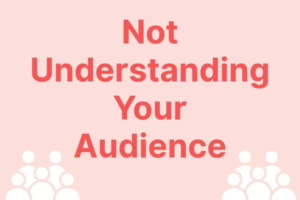
The first step in digital marketing should always be understanding your audience. Your marketing activity should be a direct reflection of your understanding of your audience.
When you don’t know who your audience is, where they live, when they’re active, what they like or dislike or what their pain points are, you will have difficulty getting your brand in front of them or getting your brand to resonate with them.
An easy way to start to understand your audience is by analysing those who are currently engaging with your content. Build a profile including their demographics, key pain points and online behaviours. For example, if you sell running shoes, you should be targeting people who have an interest in running, the outdoors and exercise. The audience would typically be younger, and their pain points could be to do with pace or comfort when running.
Once you understand your audience, the rest of your marketing strategy will start to become much clearer.
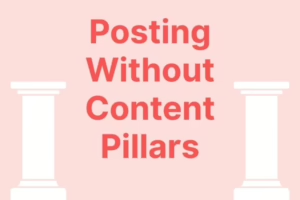
You know who you want to target, so let’s get posting, right? Woah slow down! You can’t start posting without first establishing clear content pillars.
Content pillars reflect your brand’s offerings and your audience’s needs. They ensure that your messaging stays consistent while covering all the different aspects of your brand.
Without content pillars it is easy for your content to stray away from what your audience finds valuable. It is equally likely that without content pillars your content becomes repetitive, which is also of no value to your audience.
Your content pillars should be shaped by audience research. They must reflect the interests and needs of your audience along with touching on the different offerings of your brand.
Here is an example of content pillars, if your brand sells customisable diaries for business professionals your content pillars could be:
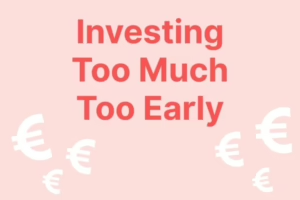
Great, now you know your audience and your content pillars, time to start putting your money where your mouth is right? Wrong(ish)!
New content and audiences need to be tested with a phased approach to ensure you’re getting the best bang for your buck.
By starting spend with a more a limited budget, you can figure out which content and audience combinations work best for your brand. This is even more effective when utilising A/B testing to compare variables and optimise performance.
You can learn more about A/B testing here:
4. Expecting Results Too Quickly

Your ads are running, you’re posting your pillars, you know your audience, so you should be the next Jeff Bezos by now right? Wrong again.
Digital marketing is a slow-building, ever evolving project. Platforms’ algorithms need time to figure out who is responding to your ads (this is known as the learning phase). You also need time to see which of your A/B tests are preforming best (your own learning phase).
Through this process you will learn which of your A/B tests are preforming best and to use that insight to further improve your communications.
It can be disheartening to not see results straight away, but by taking your time, testing thoroughly and gradually increasing your investment, you can ensure that you are better set for the future of your digital marketing efforts and long term success.
You can also support this learning phase by ensuring your tracking tools are properly set up, Meta and TikTok Pixels, LinkedIn Insight Tags and Google Tags. When set up correctly theses tools are invaluable as they can build a map of peoples behaviour from your digital marketing material all the way through the funnel on your website to (hopefully) customers.
5. Not Knowing Your Goals

We’ve already touched on how helpful tracking can be for understanding which messaging is working for your brand but what exactly should you be tracking?
Well, that depends on your objectives. You need to clearly define the goals of your digital marketing campaign. The obvious answer might be sales, but it’s important to look at the bigger picture.
Focusing solely on sales may lead to a temporary influx of business during the campaign, but what happens afterward? Running an engagement, account growth or awareness campaign along side a sales campaign can help carry the momentum forward after the main sales campaign stops.
So with that in mind, an important part of your goals should include a metric like views, follower growth or engagement, not just sales.
6. Quantity Over Quality
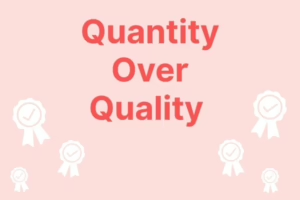
You know your pillars, you know your audience, your ads are running, now it’s time to pump out the organic content right? Wrong!
High-quality organic content is an extremely important part of a digital marketing campaign. If people click on your profile from an ad, you want to ensure what they’re seeing is valuable and aligned with their interests.
You also want to ensure that any new followers you gain are engaging with your content and sticking with you (not unfollowing). No one wants to see repetitive boring content on their feeds.
Instead of flooding your feed with rushed, irregular posts, you should focus on creating high-quality content within your established pillars, that is posted consistently. Quality content builds trust, credibility, community and long-term growth.
7. Not Using Your Content Well
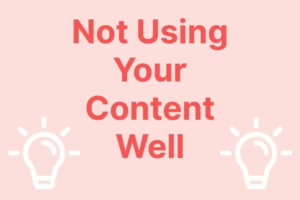
Okay, I have already yapped on about the importance of high-quality content, but what does that mean? It means content that provides value to both your brand and your audience. Some examples include, industry knowledge posts, testimonials, engagement focused posts, ect.
The easiest way to create high quality content is by utilizing the content you already have:
Work smarter, not harder. Your best content might already be at your fingertips.
(PS all these content tips can work in reverse, content made for socials can be used across your brand)
8. Neglecting Your Keywords
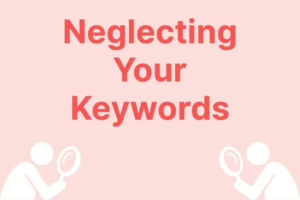
Another key aspect of high-quality content is making sure that it can be found easily. One of the best ways to do this is by utilising keywords.
Many industries have their own built in jargon, but is that jargon be what your brand’s potential customers are actually searching for?
You can compare the search popularity of words and search terms through services like, Google Trends and Answer the Public.
Once you know which terms your audience uses most, work them into your content organically and strategically, in headlines, captions, blogs and bios, where they make sense and support readability.
9. Not Understanding Social Media SEO
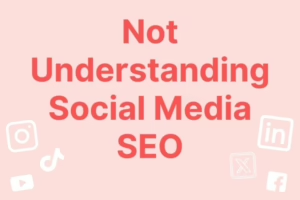
SEO isn’t just for Google anymore. More people are using social media as a search engine year on year, especially on platforms like TikTok and Instagram.
Content posted on social media platforms can be (and should be) optimised to appear in search results within the platform.
This can be achieved by including searchable phrases in your content. These could be common questions, popular services/products in your industry, or simple phrases your audience is likely to search.
An example of this would be if you are posting for a skin care brand, you can include a phrase such as “best skincare for dry skin” in your caption.
With Instagram recently announcing that its content will soon appear in Google search results, understanding and applying social media SEO just got even more important.
10. Not Using RIPPLE
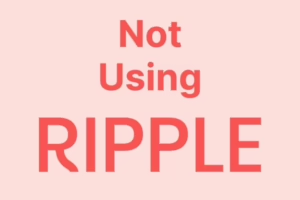
My last nugget of wisdom? Talk to RIPPLE today!
We can help curate a digital marketing strategy that is tailored to your brand and your brand’s goals.
Whether you’re starting from scratch, refreshing your current approach, or just looking for expert advice, we’re here to help.
Reach out to us today to start your digital marketing journey.
Avoiding these common mistakes can make a huge difference in how your digital marketing performs.
From understanding your audience to making the most of your content and spend, smart digital marketing starts with strategy, consistency and continuous learning.
If you’re still unsure on how to avoid these common mistakes, let’s chat!

Written by Emma Kate Rowlette
| Cookie | Duration | Description |
|---|---|---|
| cookielawinfo-checbox-analytics | 11 months | This cookie is set by GDPR Cookie Consent plugin. The cookie is used to store the user consent for the cookies in the category "Analytics". |
| cookielawinfo-checbox-functional | 11 months | The cookie is set by GDPR cookie consent to record the user consent for the cookies in the category "Functional". |
| cookielawinfo-checbox-others | 11 months | This cookie is set by GDPR Cookie Consent plugin. The cookie is used to store the user consent for the cookies in the category "Other. |
| cookielawinfo-checkbox-necessary | 11 months | This cookie is set by GDPR Cookie Consent plugin. The cookies is used to store the user consent for the cookies in the category "Necessary". |
| cookielawinfo-checkbox-performance | 11 months | This cookie is set by GDPR Cookie Consent plugin. The cookie is used to store the user consent for the cookies in the category "Performance". |
| viewed_cookie_policy | 11 months | The cookie is set by the GDPR Cookie Consent plugin and is used to store whether or not user has consented to the use of cookies. It does not store any personal data. |